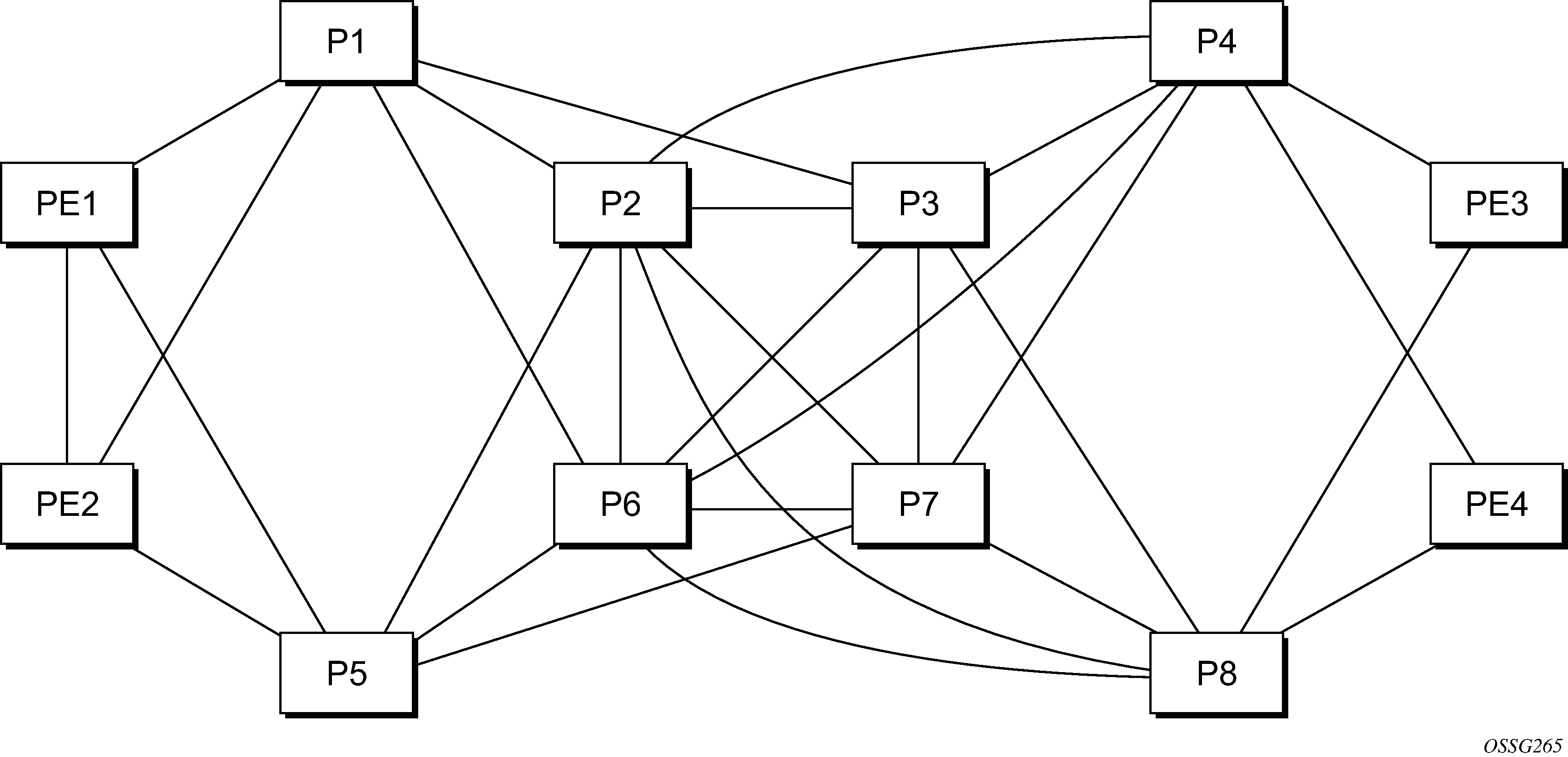Figure: Network resilience using LDP ECMP shows an IP/MPLS network which uses LDP ECMP for network resilience. Faults that are detected through IGP or LDP are corrected as soon as IGP and LDP re-converge. The impacted traffic is forwarded on the next available ECMP path as determined by the hash routine at the node that had a link failure.

However, there are faults which the IGP/LDP control planes may not detect. These faults may be because of a corruption of the control plane state or of the data plane state in a node. Although these faults are very rare and mostly caused by misconfiguration, the LDP tree trace OAM feature is intended to detect these ‟silent” data plane and control plane faults. For example, it is possible that the forwarding plane of a node has a corrupt Next Hop Label Forwarding Entry (NHLFE) and keeps forwarding packets over an ECMP path only to have the downstream node discard them. This data plane fault can only be detected by an OAM tool that can test all possible end-to-end paths between the ingress LER and the egress LER. A corruption of the NHLFE entry can also result from a corruption in the control plane at that node.